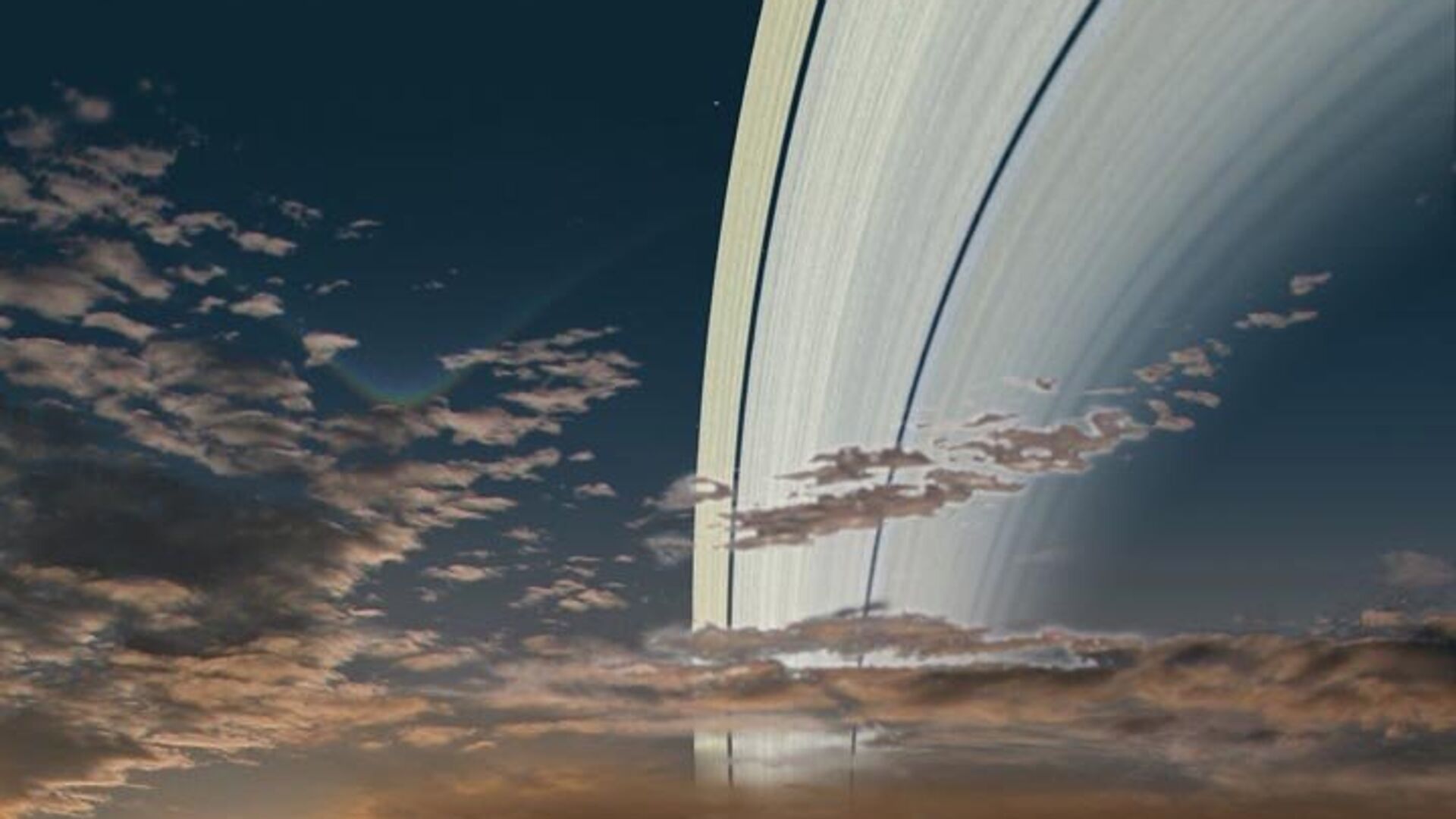https://sputnikglobe.com/20231107/researchers-saturns-iconic-rings-will-disappear-soon-1114775605.html
Researchers: Saturn’s Iconic Rings Will Disappear Soon
Researchers: Saturn’s Iconic Rings Will Disappear Soon
Sputnik International
The event, called the Saturnian equinox, occurs once about every 15 years when the planet’s angle of tilt reaches zero degrees. This means the edge of the rings will be facing us.
2023-11-07T02:38+0000
2023-11-07T02:38+0000
2023-11-07T02:38+0000
beyond politics
space
space exploration
saturn
astronomy
https://cdn1.img.sputnikglobe.com/img/104333/93/1043339329_0:158:720:563_1920x0_80_0_0_d12b8c5d163992de5ac04a0c77b46a05.jpg
Generations of children have been taught to distinguish the planet Saturn as the one in our solar system with large characteristic rings, but astronomers say they will become invisible from Earth in 2025.The event, called the Saturnian equinox, occurs once about every 15 years when the planet’s angle of tilt reaches zero degrees. This means the edge of the rings will be facing us.The rings’ typical height of about 300 feet is miniscule compared to other celestial distances, meaning the rings will disappear in visibility entirely (compare the phenomenon to viewing the edge of a thin sheet of paper).The disappearance will only be temporary however as the angle of tilt continues to change, and the rings will soon become visible again. In fact, Saturn will reach its maximum inclination of 27 degrees in 2032, giving us the best possible view of the rings. The planet’s Southern Pole will be highly visible during this time as well.Saturn’s iconic rings are made up of dust, ice, asteroids, comets, and pieces of shattered moons that orbit the planet. They were first discovered by the Italian astronomer Galileo Galilei in 1610.The planet is also distinguished by its 146 moons, the most of any planet in our solar system. The “gas giant” is mostly made up of hydrogen and helium, making it unsuitable for human life.However, most people probably won’t have to worry about their complete dissipation occurring during their lifetimes. Scientists believe the rings will only fully cease to exist in about 300 million years.
Sputnik International
feedback@sputniknews.com
+74956456601
MIA „Rossiya Segodnya“
2023
Sputnik International
feedback@sputniknews.com
+74956456601
MIA „Rossiya Segodnya“
News
en_EN
Sputnik International
feedback@sputniknews.com
+74956456601
MIA „Rossiya Segodnya“
Sputnik International
feedback@sputniknews.com
+74956456601
MIA „Rossiya Segodnya“
science, space, space exploration, astronomy, nasa, saturn, saturn's rings, saturn's disappearing rings
science, space, space exploration, astronomy, nasa, saturn, saturn's rings, saturn's disappearing rings
Researchers: Saturn’s Iconic Rings Will Disappear Soon
The planet’s rings will become invisible in March of 2025, meaning amateur astronomers wishing to see them may want to take advantage of the opportunity soon.
Generations of children have been taught to distinguish the planet Saturn as the one in our solar system with large characteristic rings, but astronomers say they will become invisible from Earth in 2025.
The event, called the
Saturnian equinox, occurs once about every 15 years when the planet’s angle of tilt reaches zero degrees. This means the edge of the rings will be facing us.
The rings’ typical height of about
300 feet is miniscule compared to other celestial distances, meaning the rings will disappear in visibility entirely (compare the phenomenon to viewing the edge of a thin sheet of paper).
The disappearance will only be temporary however as the angle of tilt continues to change, and the rings will soon become visible again. In fact, Saturn will reach its maximum inclination of 27 degrees in 2032, giving us the best possible view of the rings. The planet’s Southern Pole will be highly visible during this time as well. Saturn’s iconic rings are made up of dust, ice, asteroids, comets, and pieces of shattered moons that orbit the planet. They were first discovered by the Italian astronomer Galileo Galilei in 1610.
The planet is also distinguished by its 146 moons, the most of any planet in our solar system. The “gas giant” is mostly made up of hydrogen and helium, making it unsuitable for human life.
Although Saturn’s rings will only visibly disappear in 2025, scientists speculate they will eventually no longer exist at all as the planet’s gravity pulls them inward. “Saturn is losing its rings at [a] ‘worst-case-scenario’ rate,” said NASA in 2018.
However, most people probably won’t have to worry about their complete dissipation occurring during their lifetimes. Scientists believe the rings will only fully cease to exist in about 300 million years.




